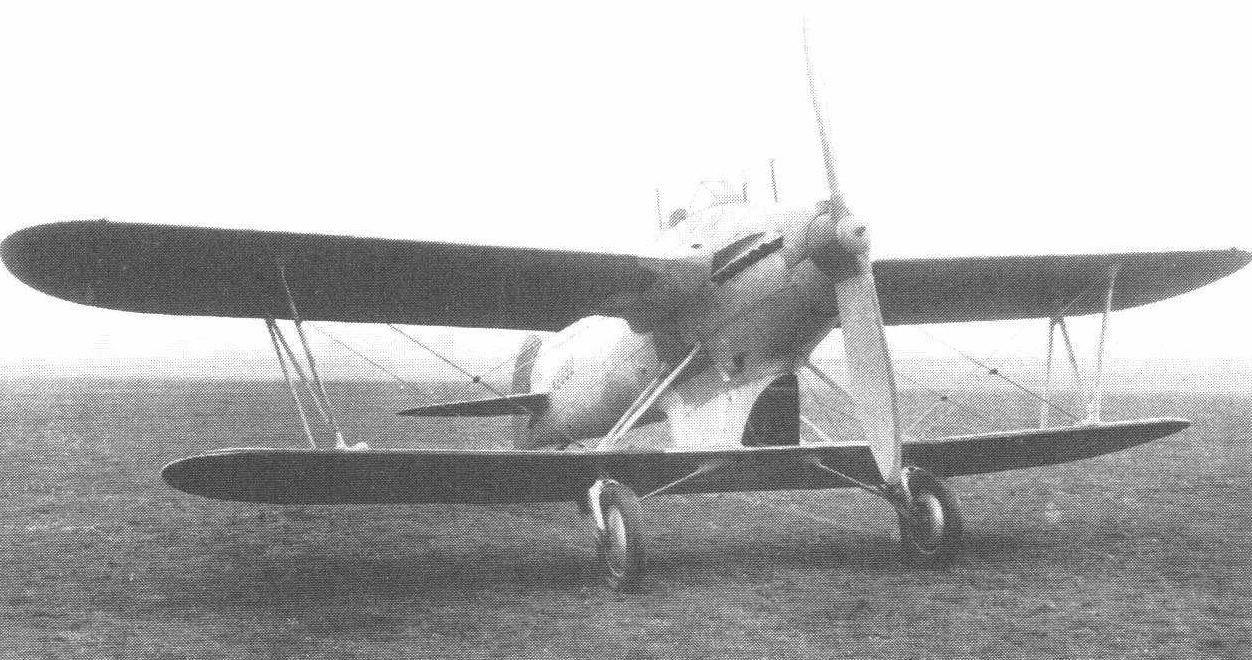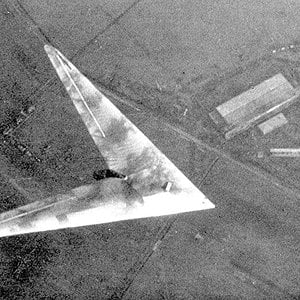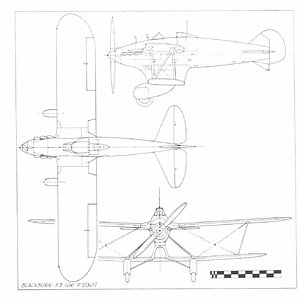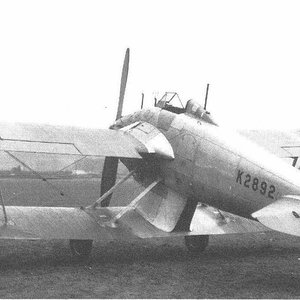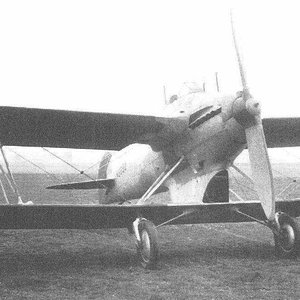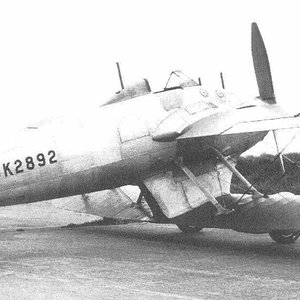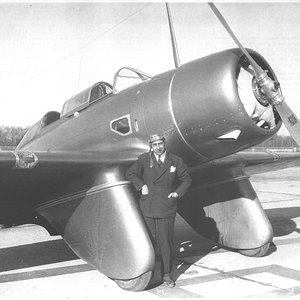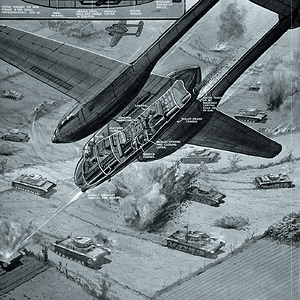Navigation
Install the app
How to install the app on iOS
Follow along with the video below to see how to install our site as a web app on your home screen.
Note: This feature may not be available in some browsers.
More options
You are using an out of date browser. It may not display this or other websites correctly.
You should upgrade or use an alternative browser.
You should upgrade or use an alternative browser.
Home » Forums » The Real Story of " Little known and unrealized projects of aircraft and other flying vehicles "experienced fighter Blackburn F.3 (F.7/30). United Kingdom
Experienced fighter Blackburn F.3 (F.7/30). United Kingdom
Posted by byakin Unknown and unrealized projects aircraft and other flying vehicles Blackburn Aeroplane and Motor Co Ltd aviation UK aviation fighter
Yandex
Kabbalah on the conflicts and wars You can avoid war if we feel like we kinship
kabacademy.com
Yandex
The skeleton of historical knowledge This is possible without cribs, worry and fear getting excellent marks
magnamedia.ru
MAR
13,
2013
+18-
The unprecedented success of the water-cooled engine Rolls-Royce Kestrel, installed on the in service with modern combat aircraft in late 1931 led to the issuance of the Air Ministry aircraft industry specifications for F.7/30 single day and night interceptor equipped engine with evaporative cooling system Kestrel IV. This engine finished lapping flight test and he went into production under the designation Goshawk. The requirements were tough - the maximum speed of more than 250 miles / hour (402.25 km / h), the superiority fighters were in service in range, maneuverability, rate of climb and service ceiling; fighter was equipped with four machine guns synchronized Vickers, receiving and transmitting radio and equipment for night flying. Among the mandatory requirements were low specific load on the wing and a good field of vision free from glare by vyhlophyh pipes.
Of the several proposals to the Air Ministry specification chosen Supermarine Type 224 , Westland PV4 and Blackburn F.3 as the most promising, having ordered one prototype and selecting serial numbers K2890, K2891 and K2892, respectively. Competition will be scheduled for 1934 in Martlsheme in the Research Center of aviation and armament (Aeroplane and Armament Experimental Establishment - A & AEE). Of Bristol and Hawker, but not selected for the construction of prototypes, at his own expense built Type 123 and PV3.
Contractors came to the specification too literally and built some very unusual aircraft, none of which, including the company designed the designer JE Blackburn Petty (GE Petty), has not received an order for production.
scheme Blackburn F.3 (F.7/30)
It was the little biplane, which could be built around a 660-horsepower Rolls-Royce Goshawk III and based on the experience of the company with bodies flying boats, Petty used a covered working dural fuselage skin with integrated keel. The rest of the aircraft was a standard scheme for Blackburn - a cloth-covered steel and duralumin construction with having rogovyu compensation rudder. Upper wing had large scale and chord than the lower and carried ailerons, which, like the elevators were unbalanced.
Blackburn F.7/30 with wheel spats and skid
Strange kind of built aircraft was due to the fact that the fuselage was raised from its normal position between the bearing surfaces to korobbka biplane was lower visual field pilot. Browse in the forward and upward was close to perfect as a streamlined nose zakapotirovannym Goshawk engine equipped with an exhaust system in front of a flame arrester cab was tilted sharply downwards. Special cell perokondensatory replace conventional radiators with coolant and were located in a streamlined tunnel, which, as in Blackburn Nautilus, the gap between the fuselage and the lower wing. Ratchet starter was mounted on a large two-bladed wooden propeller, through which all four machine guns through the mechanism of the interrupt fired. Two machine guns were located in the root portion of the upper wing, shooting through the tailpipes are located above the trough, and two others shot through the ports located on each side of the fairing capacitor.
Front view of the Blackburn F.7/30 with remote wheel spats
Exceptionally wide track chassis consisted of two disk wheels installed in steel cantilever forks, shock absorbers, spring-applied oil and fastened with bolts directly to the front spar of the lower wing. Landing loads transmitted through the main structure ustanvolennye on each side parallel to the sloping front. The wheels were almost completely covered by large duralumin fairings on the tail of the plane has been set for a typical Blackburn reinforced skid.
Blackburn F.7/30 in final form with the tail wheel, but with a plain surface coating is still a red dope
Preliminary taxiing were performed in Breaux July 20, 1934 under EM Blake (AM Blake), and the corresponding ground operational testing began on 17 August. In their course revealed that the plane, as well as other motorized Goshawk prototypes suffer from problems with cooling. Another challenge was the difficulty of aircraft taxiways short fuselage and a high center of gravity removal and replacement fairings crutch on the wheel does not have much value. During the September 5 inspections were identified resulting from rulezhek cracks and dents in the metal fuselage skin.
Experienced fighter Blackburn F.3 (F.7/30). United Kingdom
Posted by byakin Unknown and unrealized projects aircraft and other flying vehicles Blackburn Aeroplane and Motor Co Ltd aviation UK aviation fighter
Yandex
Kabbalah on the conflicts and wars You can avoid war if we feel like we kinship
kabacademy.com
Yandex
The skeleton of historical knowledge This is possible without cribs, worry and fear getting excellent marks
magnamedia.ru
MAR
13,
2013
+18-
The unprecedented success of the water-cooled engine Rolls-Royce Kestrel, installed on the in service with modern combat aircraft in late 1931 led to the issuance of the Air Ministry aircraft industry specifications for F.7/30 single day and night interceptor equipped engine with evaporative cooling system Kestrel IV. This engine finished lapping flight test and he went into production under the designation Goshawk. The requirements were tough - the maximum speed of more than 250 miles / hour (402.25 km / h), the superiority fighters were in service in range, maneuverability, rate of climb and service ceiling; fighter was equipped with four machine guns synchronized Vickers, receiving and transmitting radio and equipment for night flying. Among the mandatory requirements were low specific load on the wing and a good field of vision free from glare by vyhlophyh pipes.
Of the several proposals to the Air Ministry specification chosen Supermarine Type 224 , Westland PV4 and Blackburn F.3 as the most promising, having ordered one prototype and selecting serial numbers K2890, K2891 and K2892, respectively. Competition will be scheduled for 1934 in Martlsheme in the Research Center of aviation and armament (Aeroplane and Armament Experimental Establishment - A & AEE). Of Bristol and Hawker, but not selected for the construction of prototypes, at his own expense built Type 123 and PV3.
Contractors came to the specification too literally and built some very unusual aircraft, none of which, including the company designed the designer JE Blackburn Petty (GE Petty), has not received an order for production.
scheme Blackburn F.3 (F.7/30)
It was the little biplane, which could be built around a 660-horsepower Rolls-Royce Goshawk III and based on the experience of the company with bodies flying boats, Petty used a covered working dural fuselage skin with integrated keel. The rest of the aircraft was a standard scheme for Blackburn - a cloth-covered steel and duralumin construction with having rogovyu compensation rudder. Upper wing had large scale and chord than the lower and carried ailerons, which, like the elevators were unbalanced.
Blackburn F.7/30 with wheel spats and skid
Strange kind of built aircraft was due to the fact that the fuselage was raised from its normal position between the bearing surfaces to korobbka biplane was lower visual field pilot. Browse in the forward and upward was close to perfect as a streamlined nose zakapotirovannym Goshawk engine equipped with an exhaust system in front of a flame arrester cab was tilted sharply downwards. Special cell perokondensatory replace conventional radiators with coolant and were located in a streamlined tunnel, which, as in Blackburn Nautilus, the gap between the fuselage and the lower wing. Ratchet starter was mounted on a large two-bladed wooden propeller, through which all four machine guns through the mechanism of the interrupt fired. Two machine guns were located in the root portion of the upper wing, shooting through the tailpipes are located above the trough, and two others shot through the ports located on each side of the fairing capacitor.
Front view of the Blackburn F.7/30 with remote wheel spats
Exceptionally wide track chassis consisted of two disk wheels installed in steel cantilever forks, shock absorbers, spring-applied oil and fastened with bolts directly to the front spar of the lower wing. Landing loads transmitted through the main structure ustanvolennye on each side parallel to the sloping front. The wheels were almost completely covered by large duralumin fairings on the tail of the plane has been set for a typical Blackburn reinforced skid.
Blackburn F.7/30 in final form with the tail wheel, but with a plain surface coating is still a red dope
Preliminary taxiing were performed in Breaux July 20, 1934 under EM Blake (AM Blake), and the corresponding ground operational testing began on 17 August. In their course revealed that the plane, as well as other motorized Goshawk prototypes suffer from problems with cooling. Another challenge was the difficulty of aircraft taxiways short fuselage and a high center of gravity removal and replacement fairings crutch on the wheel does not have much value. During the September 5 inspections were identified resulting from rulezhek cracks and dents in the metal fuselage skin.

